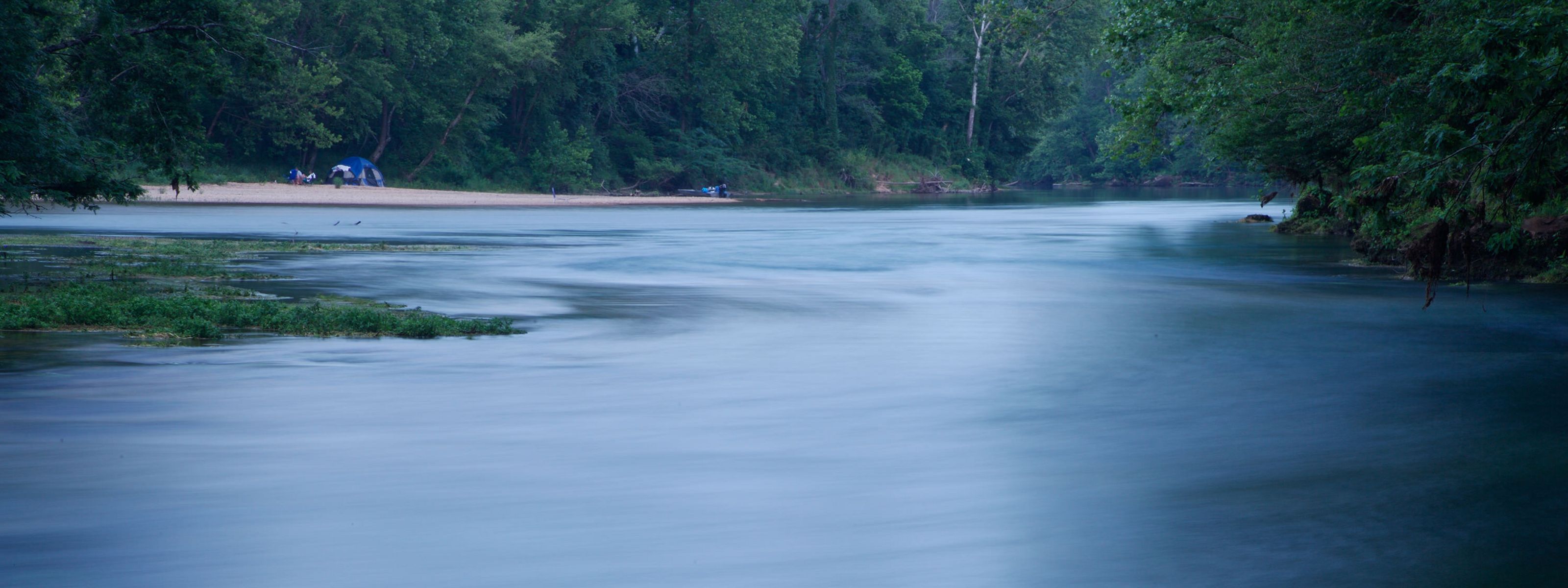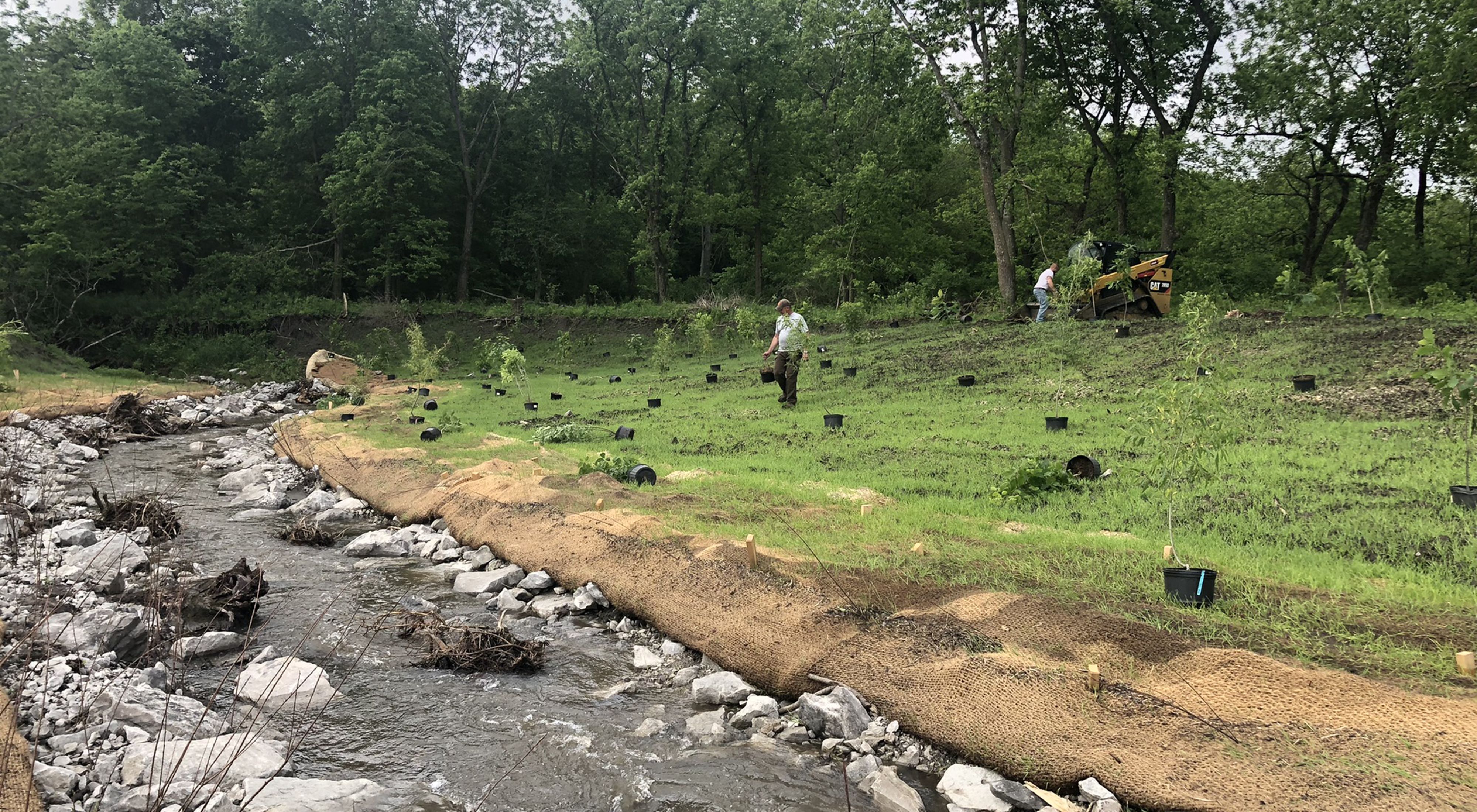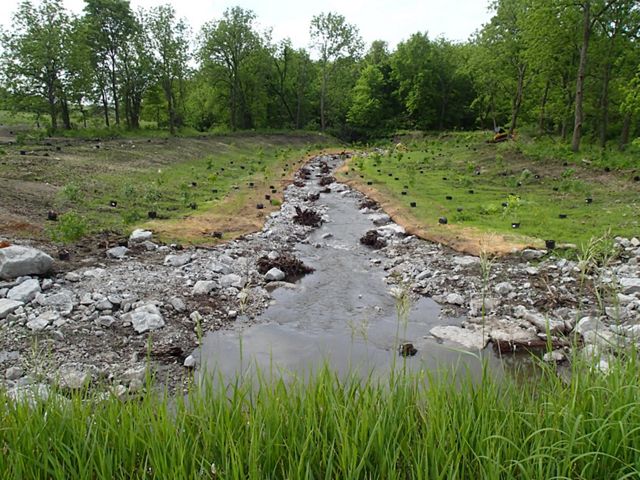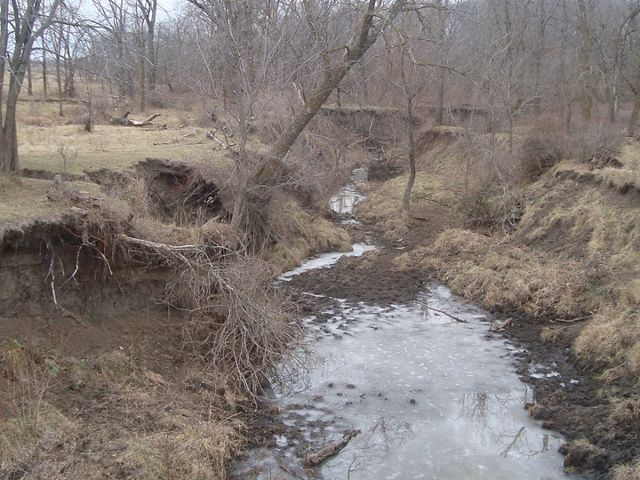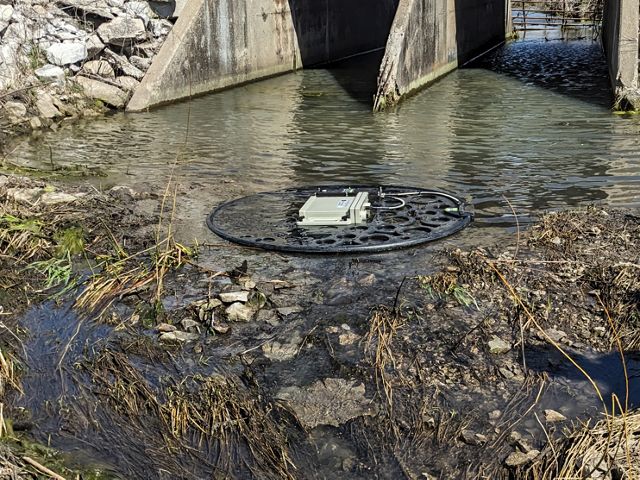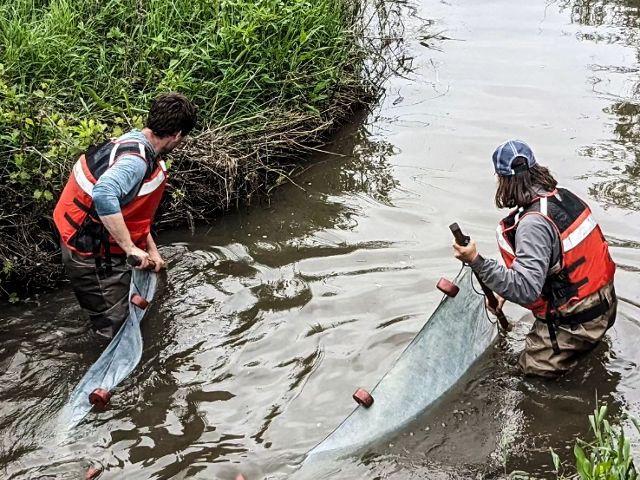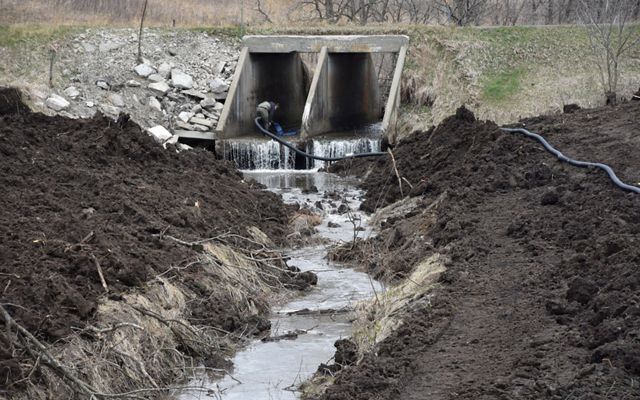The Big Lessons of Little Creek Conservation
From stream restoration to sustainable agriculture, a Missouri conservation initiative demonstrates that watersheds can recover.
On the tallgrass prairie just south of the Iowa border, a tiny minnow has a newly renovated home—and that has big implications for this ecosystem.
Construction crews spent the spring of 2022 digging out and rebuilding a stretch of scalloped, eroded banks along Little Creek on The Nature Conservancy's (TNC) property near Hatfield, Missouri. The new banks are gentle slopes, assembled in layers of stones, earth and tangled tree roots to accommodate the natural rise and fall of the creek. A mix of native grasses, shrubs and trees are sending down roots that will help hold it all in place while filtering any water running down into Little Creek.
Even the stream itself has received an upgrade.
The creek used to plunge six feet off the lip of a box culvert as it passed under an old state road, creating a small waterfall that effectively severed the lower creek from the upper creek for anything that might wish to swim upstream. Now the upstream and downstream sides of the creek are re-connected through the culvert using a bioengineered underwater ramp that ensures a more gradual and natural slope. This allows Topeka shiners to migrate up and downstream to access more habitat.
In short, it's just the place for the Topeka shiner to thrive.
Monitoring the Project
Construction is long finished. Now, ongoing monitoring by University of Missouri researchers is helping assess the effect on fish populations in the prairie stream.
Monitoring is important for TNC’s work on land and in the water. It can take on nearly endless forms: channel surveys, fish captures, water or soil sampling, acoustic recorders and even underwater antennas, to name a few. Rob Pulliam, TNC’s nature-based solutions coordinator in Missouri, says monitoring goes beyond recording what actions were taken and helps illustrate why a project was done in the first place.
“It’s not just acres, feet and miles of what we’ve done,” Pulliam says. “It’s getting to true outcomes.” The lessons inform future projects. They also build the case for expanding conservation and offer a roadmap for others.
At Little Creek, the University of Missouri researchers have begun multiyear monitoring projects with support from the Missouri Department of Conservation and TNC. In April 2024, Dr. Jacob Westhoff, assistant unit leader of the U.S. Geological Survey Missouri Cooperative Fish and Wildlife Research Unit, and doctoral student Seth Callahan outfitted 235 fish from nine different species with passive integrated transponder (PIT) tags near the newly installed underwater ramps. The tags use microchip technology, making them detectable as they swim over or within 18 inches of the antennas. It’s a little like cars passing through electronic toll booths on a highway.
The MU researchers also marked another 305 with visible implant elastomers (VIE) tags at the same time. Instead of pinging an antenna, the VIE tags are little bands of color, coded to specific areas where fish were released. Any fish caught later in different areas will help researchers determine how far they have traveled through Little Creek.
Preliminary Results
The results are only preliminary but seem promising.
“Tag detection data collected by PIT tag arrays positioned at the upstream and downstream ends of the rock ramps has already shown fish passage through both forks of Little Creek,” Callahan wrote in a June summary of their early findings.
Updates on the VIE tagged fish have proven harder to come by. Seining in May turned up only a handful of fish, a fact that Callahan attributes to the difficulty of physically capturing the fish. That too is a valuable lesson they will factor into the design of future monitoring.
The project will continue as the researchers learn more about how the restoration work affects fish, such as the Topeka shiner, a native prairie minnow placed on the endangered list more than 25 years ago.
TNC started the restoration to help the shiner. Now, the progress of the little minnow will help teach us about conservation methods we can use far beyond this stream.
Quote: Missouri Department of Conservation
More importantly, the Topeka shiner also is an indicator of environmental quality.
An Endangered Fish Warns of Trouble for Prairie Watersheds
A native of the Great Plains, the little fish was placed on the federal endangered list nearly 25 years ago as its natural habitat deteriorated or was destroyed outright. In announcing the shiner’s designation as an endangered species in 1998, the U.S. Department of Fish and Wildlife Service noted the minnow’s occupied range had declined by an estimated 80%—50% of that decline occurring during the past 25 years. That was bad news, and not only for the shiner.
“More importantly, the Topeka shiner also is an indicator of environmental quality,” the Missouri Department of Conservation wrote in 1999. “The dramatic decline of this small shiner is a clear signal of a similar decline in water quality of prairie streams—water that is essential to human health and prosperity.” In recent years, it has been recognized that altered flows within our grassland streams, from changes in land uses and climate, likely play an important role.
TNC’s project on Little Creek is helping undo some of that damage while serving as a model for what’s possible. We’re learning from projects like this and how to transfer what we learn about these types of projects elsewhere in the state and beyond.
Manmade Problems for Migratory Fish—and Communities that Need Them
The silvery minnow’s range had always been limited, but it used to be a common part of Midwestern ecosystems. Found in parts of six states across the Great Plains, it migrated through the oxbows and shallow pools of the freshwater streams winding through tallgrass prairies.
A big part of the problem for shiners and millions of other migratory fish around the world is manmade. Once free-flowing rivers have been chopped up with dams and other blockades that keep fish from swimming to habitat they need for food and breeding. In the U.S. alone, more than two million dams, culverts and other barriers keep fish from migrating upstream. And the water that backs up behind them can create stagnant pools, fatally trapping fish in overheated waters. The results are devasting—40% of the country’s freshwater fish have been listed as imperiled, decimating commercial fisheries and communities that depend on them.
Restoring Waterways Can Help Migratory Fish Rebound Fast
But there are signs of hope. Migratory fish have proven remarkably resilient. In just one example, TNC and its partners completed a river restoration in 2016 on the Penobscot River in Maine, opening up nearly 2,000 miles of habitat. The following spring, the river herring numbers grew from a few hundred to nearly 2 million.
In the past five years, TNC has taken on an ambitious slate of river and creek restorations in Missouri. Within Castlewood State Park, a popular hiking destination in St. Louis County, TNC and partners have rebuilt 2,000 feet of riverbank along Kiefer Creek and improved roughly nine acres of riparian habitat—the vegetation that transfers from the bank to the rest of the land. In McDonald County, TNC restored 1,650 feet of streambank along the Elk River where a landowner was losing 8,000 tons of soil every year to erosion.
Another project, on LaBarque Creek, rebuilt the banks with a mix of root wads, natural fibers and live plantings to protect the home of more than 40 species of fish. We followed a similar model to restore 2,000 feet along the edges of Huzzah Creek, where erosion was eating away at a family farm and dumping harmful sediment into the Meramec tributary.
Three fish passages—avenues for fish to swim through former blockades—in the upper reaches of Shoal Creek of the Ozarks have also recently been completed. TNC worked with partners to replace low-water crossings, essentially roads through shallow points in the creek, with free-span bridges that simultaneously allow fish to migrate and protect people from dangerous, swift-moving water that tops the crossings during storms.
Missouri Stream Restoration Projects
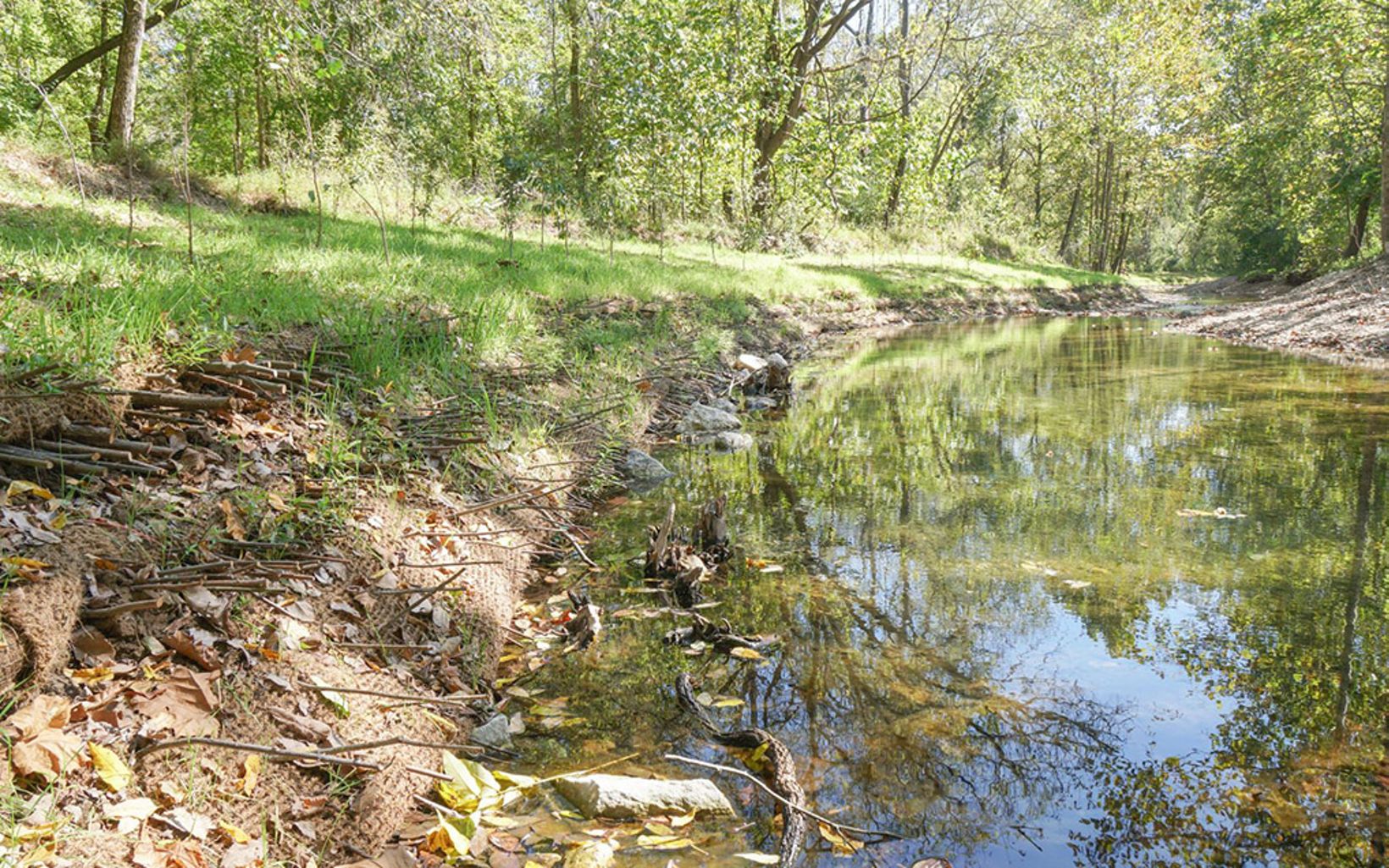
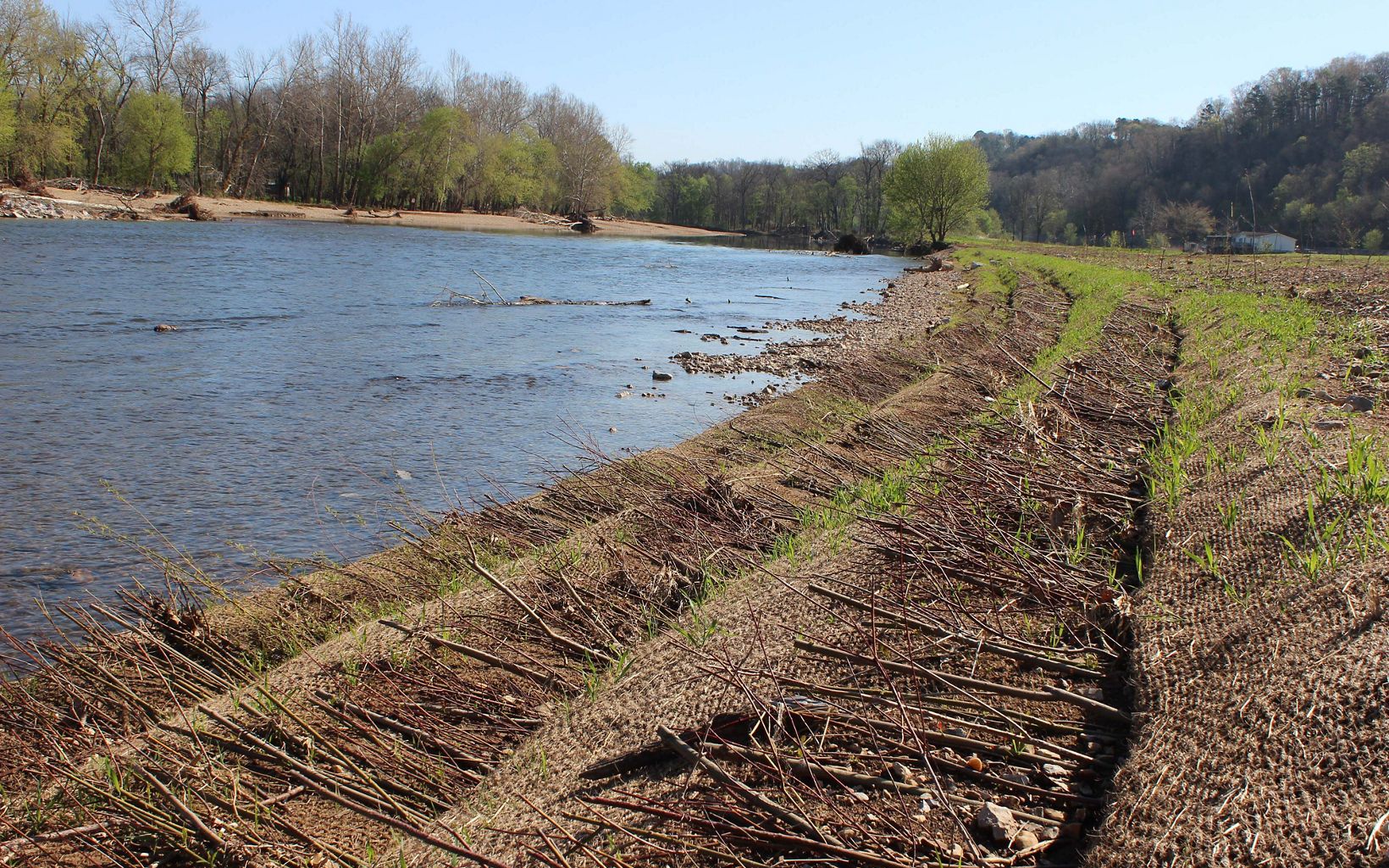
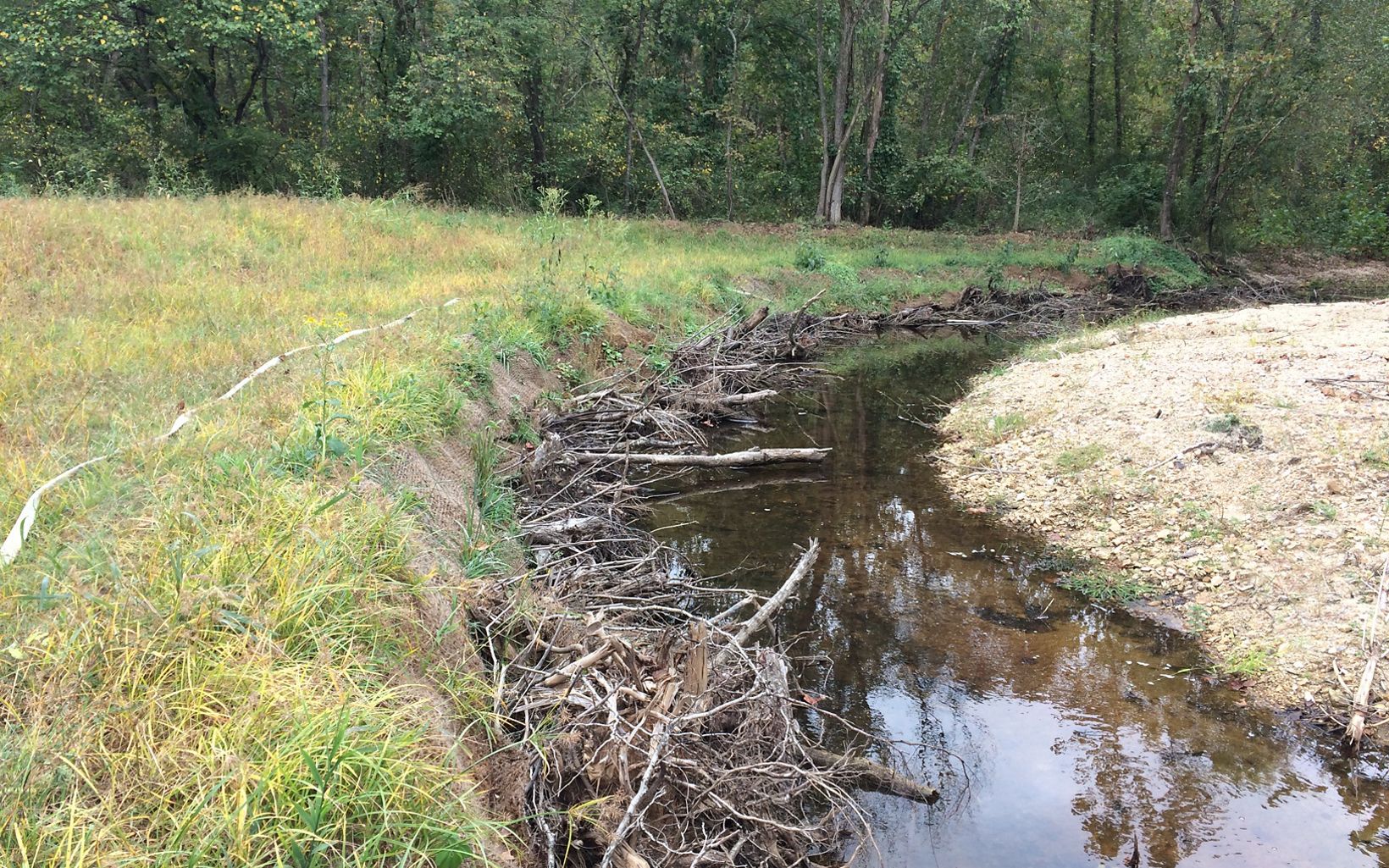
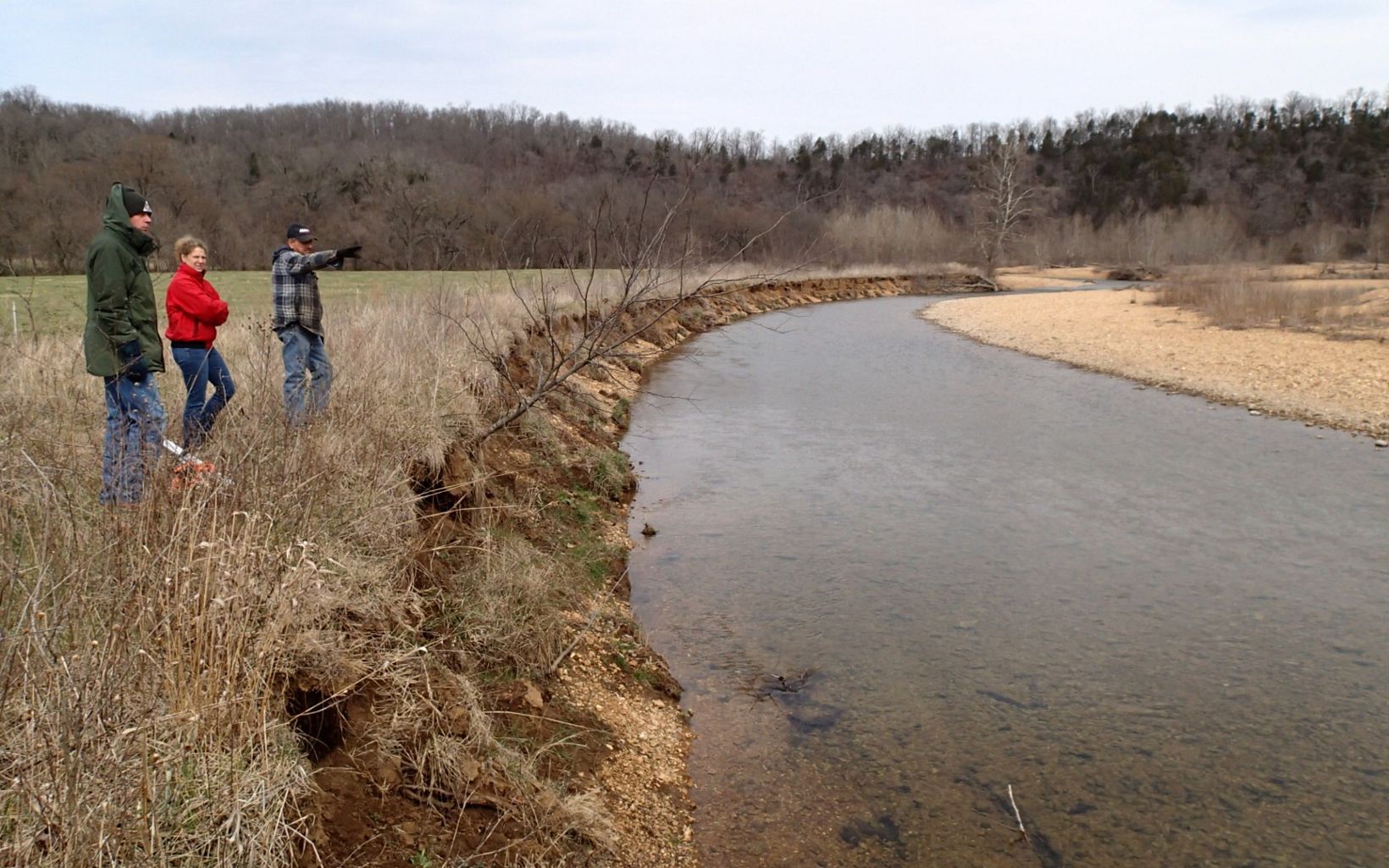
Learning to Ranch for Healthy Water
Taking care of the watershed is the first step to taking care of the water.
In 2017, TNC bought a farm just across State Route M to the south of Dunn Ranch Prairie. Now called Little Creek Farm, it has become a demonstration site for innovative ranching practices, including sustainable grazing. Kent Wamsley, TNC in Missouri’s grasslands and sustainable agriculture strategy manager, says part of the work has been to protect Little Creek, which flows under Route M and on through the ranch.
One of the first things TNC did was to fence off pastures to keep the ranch’s cattle out of the creek. Cows trample creek banks on their way to and through the water and can graze riparian buffers to the dirt, contributing to erosion. With no grass to hold it in place, the earth—and any cattle waste or other material that’s in it—washes into the creek.
Sediment fills the pools where little freshwater fishes, such as the Topeka shiner, go to seek cooler, deeper water to feed and spawn. And it also washes downstream, where it requires more effort and expense for water treatment plants and the people who depend on it.
“We’re sending cleaner water downstream,” Wamsley says.
Partner Collaboration
This project was made possible through grants from the National Fish Passage Program, the Great Plains Fish Habitat Partnership, the Missouri Department of Conservation, the Sunderland Foundation and private donors. It was completed under a partnership among The Nature Conservancy, U.S. Fish and Wildlife Service, Missouri Department of Conservation, Missouri Department of Transportation and an adjacent landowner. It was designed by LimnoTech and Shive-Hattery, and constructed by Geomorphic Restoration.
Special thanks to the North Harrison County Future Farmers of America and Watershed Conservation Corps of the Watershed Committee of the Ozarks for assisting in revegetation of the project area. This project benefited the local economy by engaging over a dozen local businesses during project construction, February – June 2022.
Want to Learn More About Our Work in Missouri?
Sign up to receive monthly conservation news and updates from Missouri. Get a preview of Missouri’s Nature News email.
